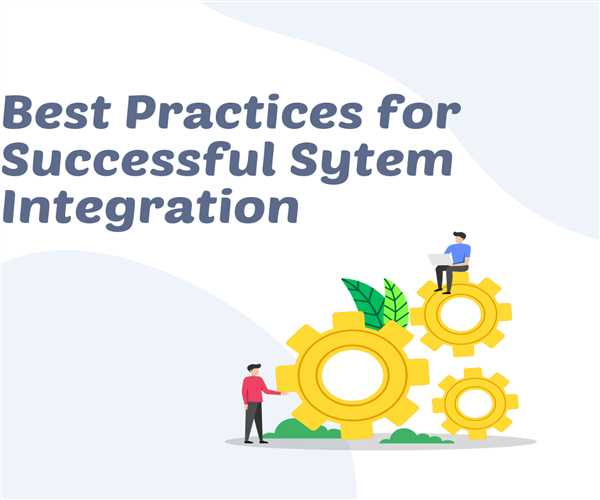System integration is vital for a variety of reasons such as to improve communication, cut down on duplication, and streamline operations. Increased productivity, lower expenses, and more customer satisfaction are all possible outcomes of successful system integration. A coherent and functional system is created by successfully integrating various hardware and software components. But it necessitates rigorous preparation and execution.
In this article, we will look at several best practices for successful system integration.
Set Specific Goals: Setting organizational targets is the first stage in successful system integration. What objectives does integration have? What commercial goals do you seek to meet? You can make sure that all stakeholders are on the same page and working towards the same objectives by clearly stating them upfront.
Consider scaling up: Your needs for system integration will change as your business expands. Because of this, it's critical to prepare for scalability at the onset. Create a flexible system integration architecture that can change as your company and the technology landscape does. This will save you money on unnecessary rework and guarantee that your system integration efforts will be able to sustain your company in the long run.
Choose the Proper Integration Platforms and Tools: The market offers a wide variety of platforms and integration tools. It's crucial to select the appropriate ones for your company's requirements. Take into account aspects like cost, security, scalability, and ease of use. Be sure the platforms and tools you select can interface with the systems you intend to use and are compatible with your current systems.
Create a Comprehensive Integration Plan: The scope of the integration endeavor, the integration architecture, and the integration processes and procedures should all be specified in a thorough integration plan. A schedule for testing and implementation ought to be included. Everybody involved in the integration process should be able to understand their roles and responsibilities and collaborate effectively thanks to a clearly defined integration strategy.
Engage Important Stakeholders: Key stakeholders must support system integration for it to be successful. Include stakeholders at the beginning of the integration process to guarantee that their requirements and worries are taken into account. By doing this, you may encourage stakeholders to feel a feeling of ownership and commitment, which is crucial for successful integration.
Integrity Check and Validation: For a system integration to be effective, testing and validation are essential processes. Test the integration solution assiduously to make sure it complies with the specifications and can manage the anticipated loads. Make sure the solution can function as expected in real-world settings by validating it in a setting similar to a production environment.
Create a Strong Support Model: Even the best-designed integration solution may run into problems in actual use. Because of this, it's crucial to create a strong support system to make sure that any problems can be found and fixed right away. To guarantee that support issues are handled promptly and effectively, establish explicit escalation pathways and service level agreements (SLAs).
Monitor and Improve Performance: After your integration solution is in use, it's critical to keep an eye on it and make any necessary adjustments to improve performance. To make sure that the integration solution is achieving its performance goals, establish performance metrics and regularly check them. To pinpoint areas that need improvement and optimization, use the monitoring data acquired.
To Conclude, a well-defined action plan that takes into account the organization's goals, objectives, the numerous systems that need to be integrated, and the current IT infrastructure is necessary for successful system integration.




Leave Comment